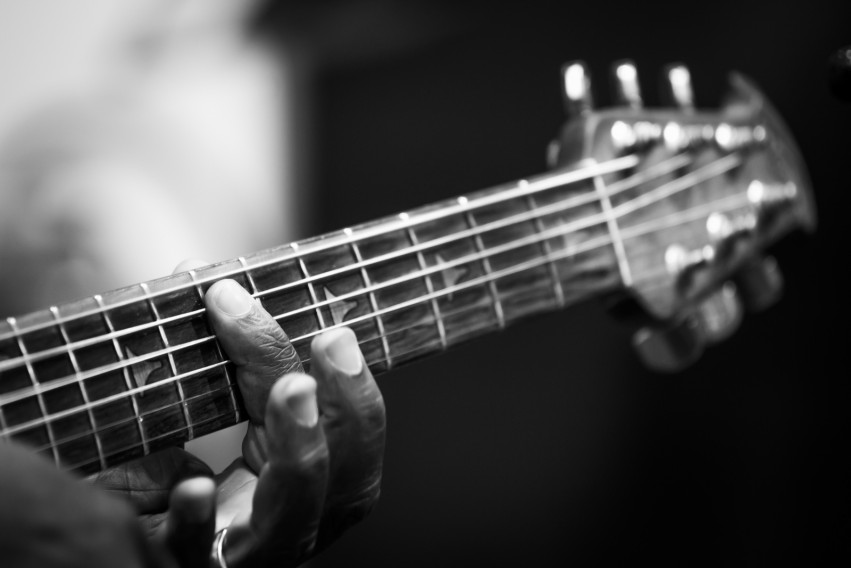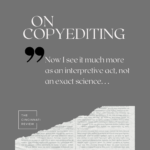Rochelle Hurt: In music, riffing usually refers to a method of composition in which a single element (like a series of notes in a specific order) is repeated, sometimes changing slightly with each new iteration, in order to form a pattern—though riffing is often improvisational. It’s a technique common to poetry as well. For example, anaphora (the repetition of a word or phrase at the beginning of each line) can be understood as a linguistic riff, as can internal rhyme, repetition, alliteration, assonance, and consonance.
In her prose poem from issue 12.2, Cindy Beebe riffs on the turn of phrase “make no bones about it,” which serves as the poem’s title. She jumps right in with an extension of the title, “Not one single bone,” and then elaborates using “bone/s” as her riffing point and reintegrating the word “make”: “Make soup, if you like, though bones in the soup are not allowed. Even nice, fat ham bones, with ham bits on them.” In this brand of crafted spontaneity, repeated words and sounds become bridges to new phrases or ideas. Later in the poem, “make” and “bones” return to set off the following chain of sonic events: “Make no bones that float. Or sink, either. Make hay, rather. Make barley, alfalfa, the cows will love you. The cows will bow to you in one smooth, synchronous plié. A little cow ballet.” The progression here is not narrative, nor even logical in a traditional sense—rather, Beebe’s movement seems to be guided by an associative logic. This is a form of play, of course, but it is serious in its linguistic endeavors.
The author describes her process as a means of finding new life in worn out language: “Idioms have always fascinated me. I marvel at how they are able to retain their place in our language, sometimes for centuries, long after their origins are forgotten. If we were to look at them with our eyes open, as though we were children again, what new things might we see in them? What old things might we see differently? Writing “Make No Bones about It” was sort of like milking an old, familiar cow to find out what she might still be worth.”
While Beebe’s riffs do not form a predictable pattern, they are tied together. In this way, the poem forms an expansive network of meaning and connotation with a single idiom at its center. Each individual phrase or idea acts as a lateral extension of meaning from that center, and this allows them to cross back and forth over one another: “Such as whoopee. Such as in the morning, when you are floating still in your little boat of sleep, and the other skin, the skin that isn’t yours, comes drifting over into your own sleepy flesh. And there is this mesh like a dream you dream together. Dreams of whoopee, lots of whoopee.”
This lateral structure is precisely what makes the prose form perfect for Beebe’s poem. The prose block here is a wide plane on which this network of meanings can unfold, expanding outward rather than moving forward down the page in a linear fashion. Additionally, the condensed form supports Beebe’s associative leaps. The breathing space that would be provided by line breaks is not required here, where the reader is whisked quickly from one riff to the next—so quickly, in fact, that when one arrives finally back at the poem’s title phrase, “make no bones about it,” the arrival feels both astonishing and inevitable.
(The opening guitar riff from Sleater-Kinney’s “Dig Me Out” is one of my favorite earworms.)











